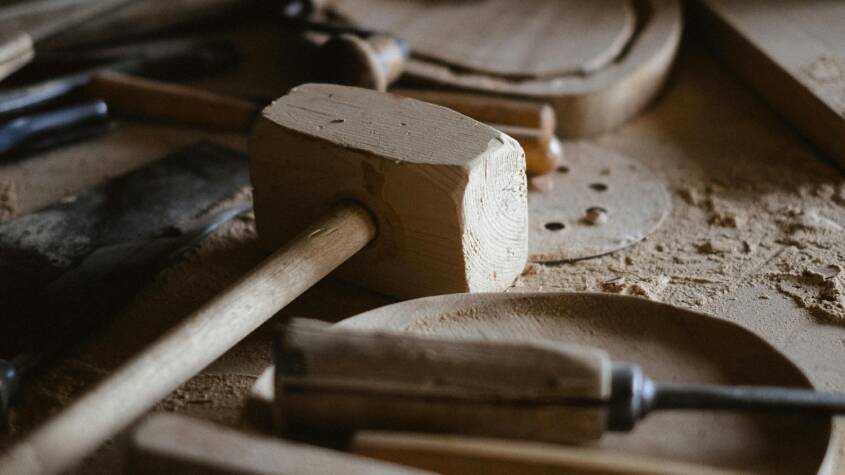
Roofing tools are essential for anyone looking to undertake a roofing project, whether it be a minor repair or a complete installation. Investing in the right tools can significantly improve both the quality and efficiency of the work. From basic hand tools to specialized equipment, understanding what each tool does enhances the overall effectiveness of roofing tasks.
The variety of roofing tools available serves different purposes, and knowing which ones are necessary can help save time and frustration. Essential tools include roofing nailers, safety harnesses, and flashing tools, among others. Each tool plays a critical role in ensuring that the roofing process runs smoothly and safely.
With the right tools in hand, both DIY enthusiasts and professional roofers can achieve better results and maintain high safety standards. Exploring the key roofing tools and their uses will empower readers to make informed decisions for their roofing projects.
Essential Roofing Tools
Choosing the right tools is critical for effective roofing work. The following sections detail the key tools needed for measuring, cutting, shaping, and fastening roofing materials.
Measuring and Alignment Tools
Measuring and alignment tools ensure accuracy in roofing projects. Essential tools in this category include:
- Tape Measure: A retractable tape measure is fundamental for measuring the length and width of roof sections. It should have clear markings to help avoid miscalculations.
- Chalk Line: This tool creates straight lines across surfaces. It is invaluable for aligning shingles or flashing.
- Level: A level helps verify horizontal and vertical alignments. This prevents water pooling and ensures proper drainage.
- Square: A framing square is essential for checking right angles, particularly when cutting roofing materials.
Using these tools correctly contributes to precision, reducing the likelihood of costly errors.
Cutting and Shaping Tools
Cutting and shaping tools are necessary for preparing roofing materials. Key tools include:
- Utility Knife: A sharp utility knife is ideal for cutting shingles and underlayment. It provides control for detailed cuts.
- Tin Snips: For metal roofing, tin snips cut through metal sheets effectively. They come in different types, such as straight, curve, and locking.
- Circular Saw: A circular saw is useful for cutting larger sections of plywood or OSB. Using the correct blade type can enhance efficiency and reduce material waste.
- Roofer’s Hatchet: This multi-functional tool combines a hammer and knife, useful for driving nails and cutting materials in tight spots.
Employing these tools properly maximizes efficiency and quality in roofing tasks.
Fastening Tools
Fastening tools secure roofing materials in place. Important fastening tools include:
- Nail Gun: For speed and efficiency, a pneumatic or cordless nail gun is preferred. It significantly reduces time spent on attaching shingles.
- Hammer: A heavy-duty roofing hammer is crucial for driving nails into shingles and handling repairs.
- Screw Gun: A screw gun is essential for installing metal roofing panels. It ensures screws are driven to the correct depth.
- Stapler: When laying down underlayment, a staple gun provides a fast way to secure materials.
Using the proper fastening tools enhances the durability and stability of a roofing project.
Safety and Protection Equipment
Prioritizing safety is crucial for anyone working in roofing. The right safety and protection equipment play a vital role in ensuring the well-being of workers on the job site. Personal protective equipment (PPE) and fall protection systems are essential components of this approach.
Personal Protective Equipment
Personal Protective Equipment includes items that shield workers from various hazards. Key components of PPE in roofing include:
- Safety Helmets: Protect against falling objects.
- Safety Goggles: Guard the eyes from debris and chemicals.
- Respirators: Recommended when working with potentially harmful dust or fumes.
- Hearing Protection: Earplugs or earmuffs are essential in noisy environments.
- Gloves: Cut-resistant gloves prevent hand injuries from sharp materials.
Proper use of PPE reduces the risk of injuries and enhances safe working conditions. Regular inspections of each item ensure they remain effective.
Fall Protection Systems
Fall protection systems are instituted to prevent accidents from heights. Essential elements of fall protection include:
- Harnesses: Should fit correctly to provide maximum safety.
- Lanyards: Used to connect harnesses to anchor points.
- Guardrails: Installed around roof edges to prevent falls.
- Safety Nets: Useful in catching workers who might fall.
The implementation of these systems is critical in any roofing project. Training workers on the proper use of fall protection equipment is equally important to ensure compliance and safety.
Fitterfirst: Enhancing Your Performance and Stability Through Innovative Solutions
Fitterfirst is an innovative company focused on enhancing physical fitness and overall wel…






